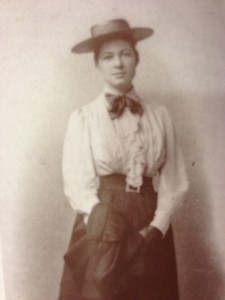
The May 15, 2014 edition of The New York Times has an article by Edward Rothstein about a new exhibit at the New York Botanical Garden that pays tribute to women landscape designers from the early 20th Century. Included in the article and the exhibit is, of course, Ellen Biddle Shipman, the renowned landscape architect who designed the landscape at the Causeway (now known as Tregaron) in 1914; Shipman returned many times to the Causeway over the decades to follow. The article states that:
“The garden design of this period, dominated by three women being featured — Farrand (1872-1959), Coffin (1876-1957) and Ellen Shipman (1869-1950) — creates formal geometric spaces, carving paths through plantings that no one could mistake for the work of nature. In this they echo the classical European gardens that defined the royal estates of 18th- and early-19th-century Europe. Reflecting pools and statuary are elements of stately symmetry. And the garden photographers give us a sense of this cool geometric substructure.
But the conservatory’s corridors of bloom and the gardens’ segmented plots then break with formality. They are spiked with fertile profusions, as if patches of the wild were emerging, scarcely constrained by boundaries. The photographs, notably those of Frances Benjamin Johnston (1864-1952) — celebrated by the library exhibition’s curator, Sam Watters, in an extensive catalog and an online Library of Congress collection — are often shot with such a narrow range of focus that they hallow their subjects with hazy hints of age, as the gardens’ borders risk being overrun with long-lived fecundity.
This style is partly a paean to the nouveau and not-so-nouveau riches of the late Gilded Age and their heirs, the gardens laying claim, as their commissioning owners did, both to the formal heritage of the Old World and the unruly energies of the New, vintage invocations mixing with daring hints of unpredictable élan.”
The above describes well Shipman’s approach at the Causeway/Tregaron as she designed the formal gardens around the Mansion, yet broke with formality as she planned and installed the extensive “wild gardens” found throughout Tregaron — around the lily pond, along the trails, streams, and meadows, and throughout the 13 acre woodland.

From left, Beatrix Farrand, Marian Coffin and Ellen Shipman, three pioneering women in American garden design.

